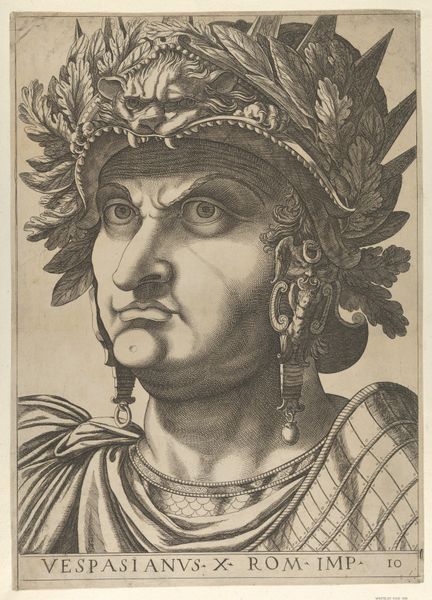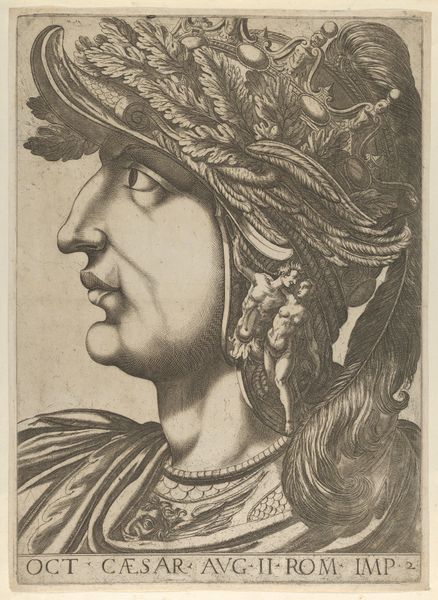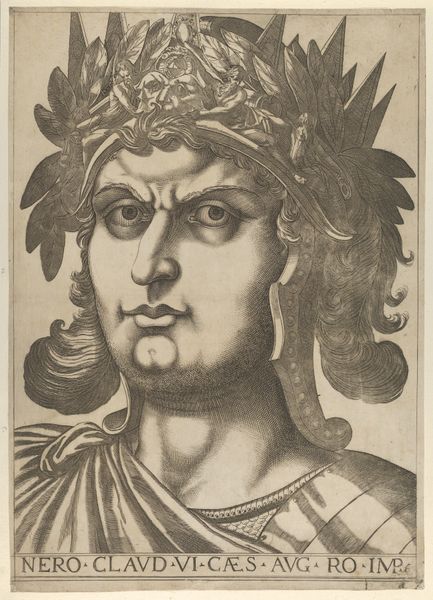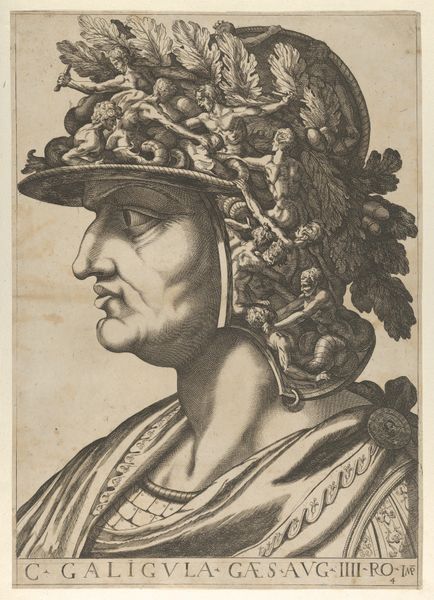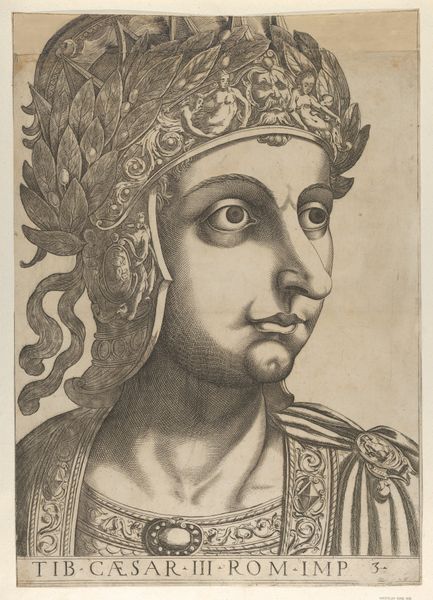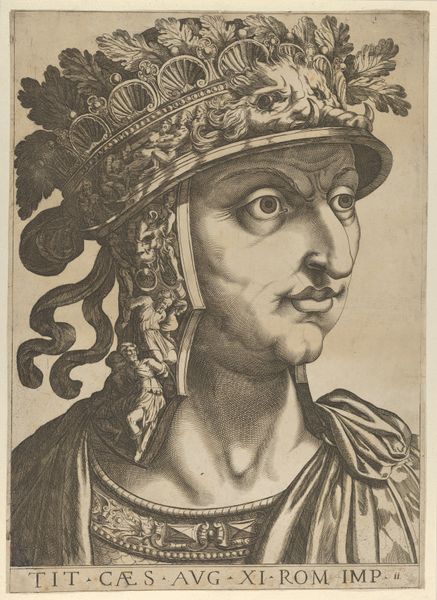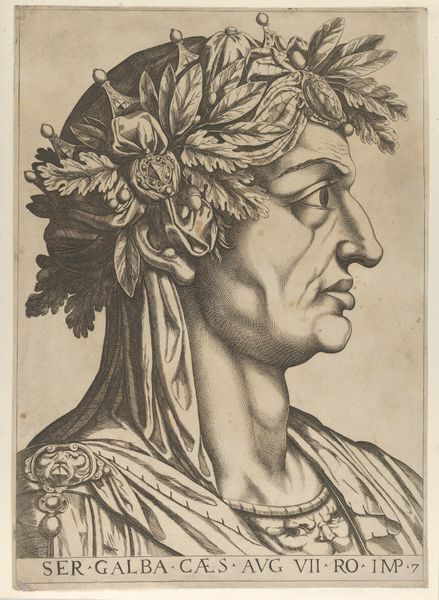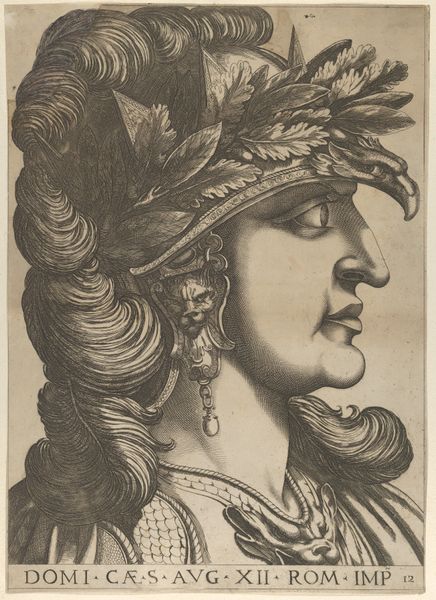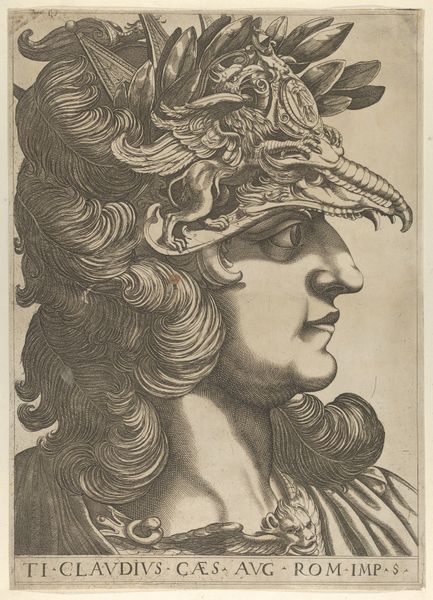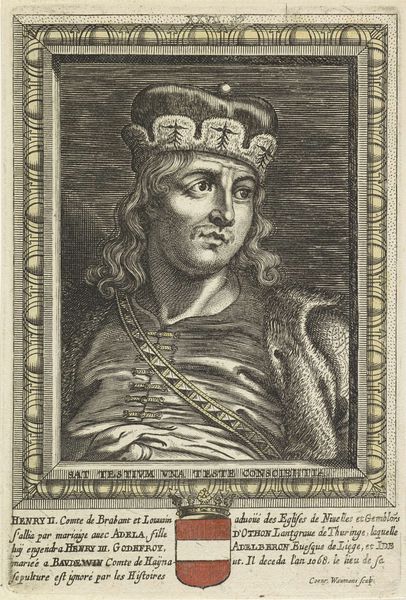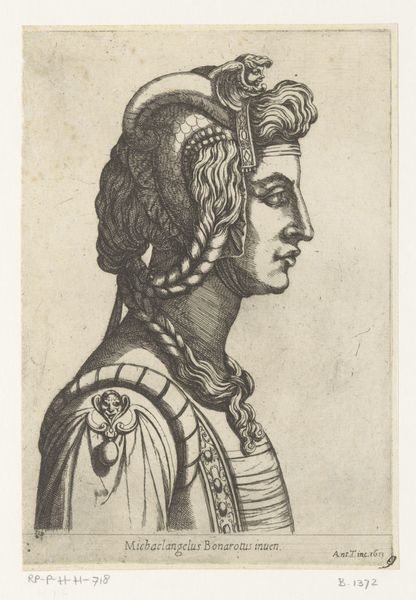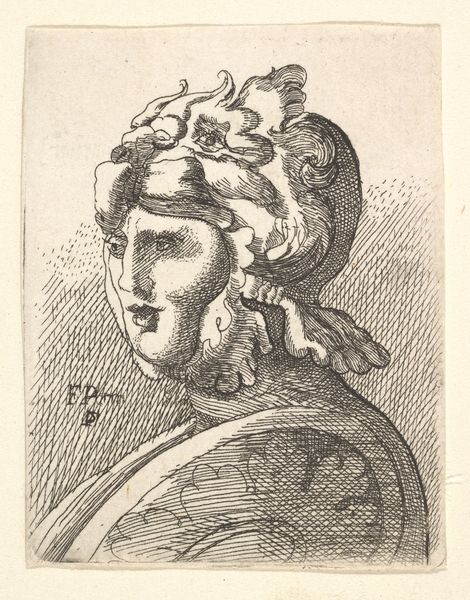
Plate 9: Aulus Vitellius with his head turned slightly to the left, from "The Twelve Caesars" 1610 - 1640
0:00
0:00
drawing, print, engraving
#
portrait
#
drawing
# print
#
ancient-mediterranean
#
men
#
history-painting
#
engraving
Dimensions: Sheet (Trimmed): 20 1/16 × 14 1/2 in. (51 × 36.8 cm)
Copyright: Public Domain
Editor: This is "Plate 9: Aulus Vitellius with his head turned slightly to the left, from "The Twelve Caesars,'" made sometime between 1610 and 1640. It's an engraving and drawing. The details are incredible! It gives the impression of wealth and power. What stands out to you about this piece? Curator: What I see here is a negotiation of power dynamics through material representation. The choice of engraving – a reproducible medium – speaks to the distribution of power and the construction of celebrity, even of historical figures. Editor: How so? The figure seems very... elevated in status. Curator: Exactly! Consider the process: An artist, likely working under patronage, meticulously carves this image into a plate. That plate is then used to create numerous prints, circulating the image and, by extension, the Roman Emperor Vitellius. Isn't the consumption of this image a kind of participation in that historical power? How might the materials themselves – the paper, the ink – have signified class or status at the time of its production? Editor: So, it’s less about Vitellius as a man, and more about how his image was used, copied, and even sold? That makes me wonder about the original intent behind producing it, too. Curator: Precisely. Think about the labor involved – the artist’s time, the cost of materials, the market for such images. These prints become commodities, entangled in the economic and social fabrics of their time. Editor: I never really considered all of those things that go into creating a portrait! It really does make you rethink the story being told in this engraving. Curator: And how that story is ultimately distributed and consumed! We learn about materials and manufacturing; together we come to realize how a portrait functions as a tool of material culture.
Comments
No comments
Be the first to comment and join the conversation on the ultimate creative platform.
